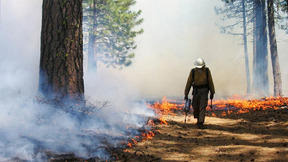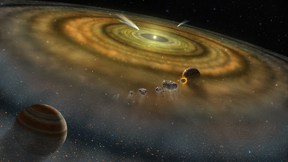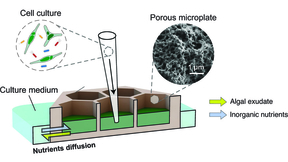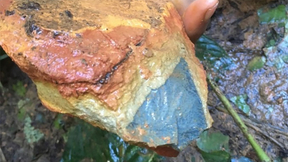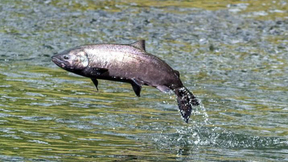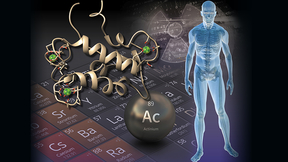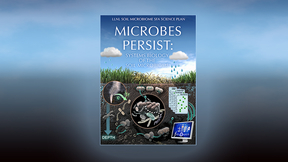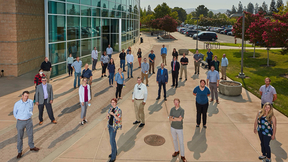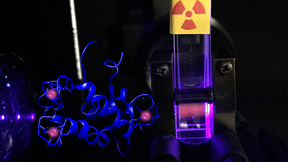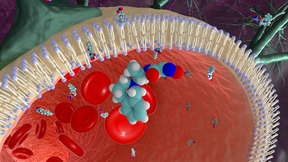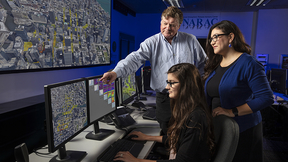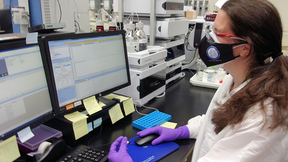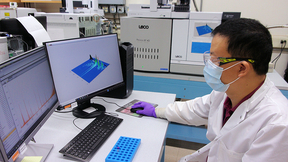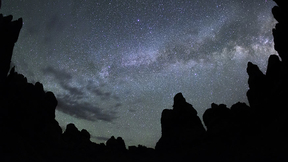Back
Antibiotics have allowed for the widespread control of bacterial infections, which had been the leading cause of death historically. However, the overuse of traditional antibiotics in humans and animals resulted in the emergence of stronger, more potent bacterial strains that are no longer treatable with conventional antibiotics. Researchers at Lawrence Livermore National…
Lawrence Livermore National Laboratory (LLNL) scientists have developed a custom microscope to image microbes in soil and plants at the micrometer scale. Live imaging of microbes in soil would help scientists understand how soil microbial processes occur on the scale of micrometers, where microbial cells interact with minerals, organic matter, plant roots and other…
A new method improves the extraction and separation of rare-earth elements—a group of 17 chemical elements critical for technologies such as smart phones and electric car batteries—from unconventional sources. New research led by scientists at Pennsylvania State University and LLNL demonstrates how a protein isolated from bacteria can provide a more environmentally…
Wildfires and prescribed burns, which can promote soil organic matter stability, may be an important nature-based climate solution to increase long-term carbon storage. That is the conclusion of an international team of researchers, including a scientist from Lawrence Livermore National Laboratory (LLNL), who looked at the effect of wildfires and prescribed burns on the…
A Livermore report outlines a strategy to reduce California’s carbon emissions to net zero by 2045.
By looking at the range of isotopic variations in terrestrial and meteoritic samples, a Lawrence Livermore National Laboratory (LLNL) scientist and collaborators have figured out that Earth and Mars formed by collisions of planetary embryos originating from the inner solar system. Rocky planets may have formed by two fundamentally different processes, but it is unclear…
Microscopic algae are responsible for half of the global atmospheric carbon fixed from the atmosphere through photosynthesis, and may be used as a sustainable bioenergy source. The water immediately outside their cells, called the “phycosphere,” is rich with algal-excreted organic carbon, and is an ideal ecosystem for bacterial growth. However, detecting and measuring…
Rock weathering controls the potential for soil carbon storage at a continental scale. New research from Lawrence Livermore National Laboratory (LLNL) and collaborators found that rock weathering — the process of chemical transformation by long exposure to water and the atmosphere — boosts soil organic carbon storage by altering soil mineralogy. The research appears in the…
In drought years and when marine heat waves warm the Pacific Ocean, the rare late-migrating juvenile spring-run Chinook salmon of California’s Central Valley are the survivors. They are among the few salmon that return to spawning rivers in those difficult years to keep their populations alive, according to results published today in Nature Climate Change. The trouble is…
Lawrence Livermore National Laboratory (LLNL) and Penn State scientists have demonstrated how a protein can be recovered and purified for radioactive metals like actinium that could be beneficial for both next-generation drugs used in cancer therapies and the detection of nuclear activities. Radioactive metals hold unique and essential places in a variety of medical…
When Daniel Martin put the finishing touches on an autonomous vehicle robot, complete with an ultrasonic sensor to detect and evade obstacles, he knew he wanted to become an engineer. A high school student at the time, he was fascinated by the design and functionality of robots. Fast forward several years, and Martin is now a second-year electrical engineering Ph.D…
Do dead microbes control the future of Earth’s climate? A team of researchers led by Lawrence Livermore National Laboratory (LLNL) suspects they might. Using new tools, the team can see which soil organisms are thriving and which are dying in California’s changing climate — and what happens to carbon in their cell biomass when they do. The seven-institution team has just…
The earliest solids formed in the solar system give clues to what radioactive species were made by the young sun, and which ones were inherited. By studying isotopic variations of the elements vanadium (V) and strontium (Sr), an international team of researchers including scientists from Lawrence Livermore National Laboratory (LLNL) found that those variations are not…
The Post-Detonation Rapid Response Research Venture — also known as R-cubed or R3 — is combining basic research and development of emergent technologies, predictive capabilities and systems assessment to revolutionize the speed and flexibility of technical nuclear forensic (TNF) response to nuclear events. The venture is a multi-laboratory collaboration led by Lawrence…
Lawrence Livermore National Laboratory (LLNL) scientists and collaborators have proposed a new mechanism by which nuclear waste could spread in the environment. The new findings, which involve researchers at Penn State and Harvard Medical School, have implications for nuclear waste management and environmental chemistry. The research is published in the Journal of the…
Scientists at Lawrence Livermore National Laboratory (LLNL) have developed a new, versatile antidote to counteract exposure to nerve agent poisoning. The work, appearing in the journal Scientific Reports, was the result of a highly iterative process built in collaboration between LLNL’s Global Security Directorate, its Forensic Science Center and the U.S. Army Medical…
Editor’s note: The following is part of a series of articles looking back at the Lab's response immediately following the Sept. 11 attacks and our contributions since that day 20 years ago. From keeping Americans safe at national events to assisting with international disasters, Lawrence Livermore National Laboratory’s (LLNL) National Atmospheric Release Advisory Center …
It wasn’t an easy road, but Lawrence Livermore National Laboratory (LLNL) Forensic Science Center scientists earned an “A” grade in the Organisation for the Prohibition of Chemical Weapons’ (OPCW) recent biomedical proficiency test. In addition to the usual complexity of the sample preparations and analysis, the Livermore scientists received their proficiency test samples…
This fall, a score of scientists from Lawrence Livermore National Laboratory's (LLNL) Forensic Science Center (FSC) will start two weeks of long days to undertake the Organisation for the Prohibition of Chemical Weapons (OPCW) environmental proficiency test. Livermore scientists have been taking the proficiency tests each October since 2001, with LLNL serving as one of two…
How could life begin from a swirling chaos? How did Earth and its moon form? What can lunar rocks from the Apollo missions reveal? And what will scientists learn from exploration on distant moons? These questions are addressed in this four-part feature article on Lawrence Livermore’s space science research.




